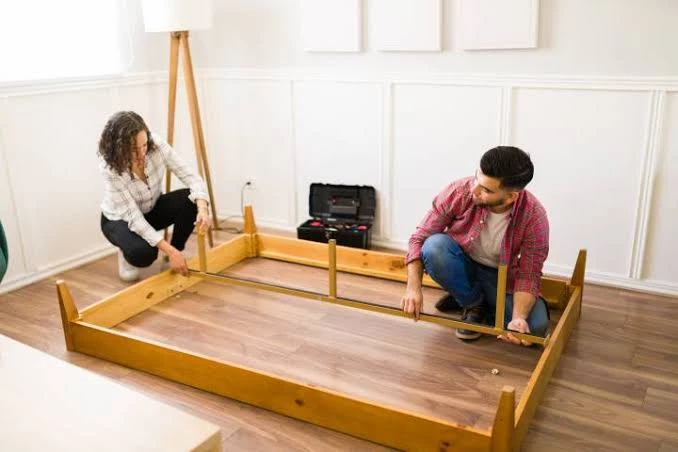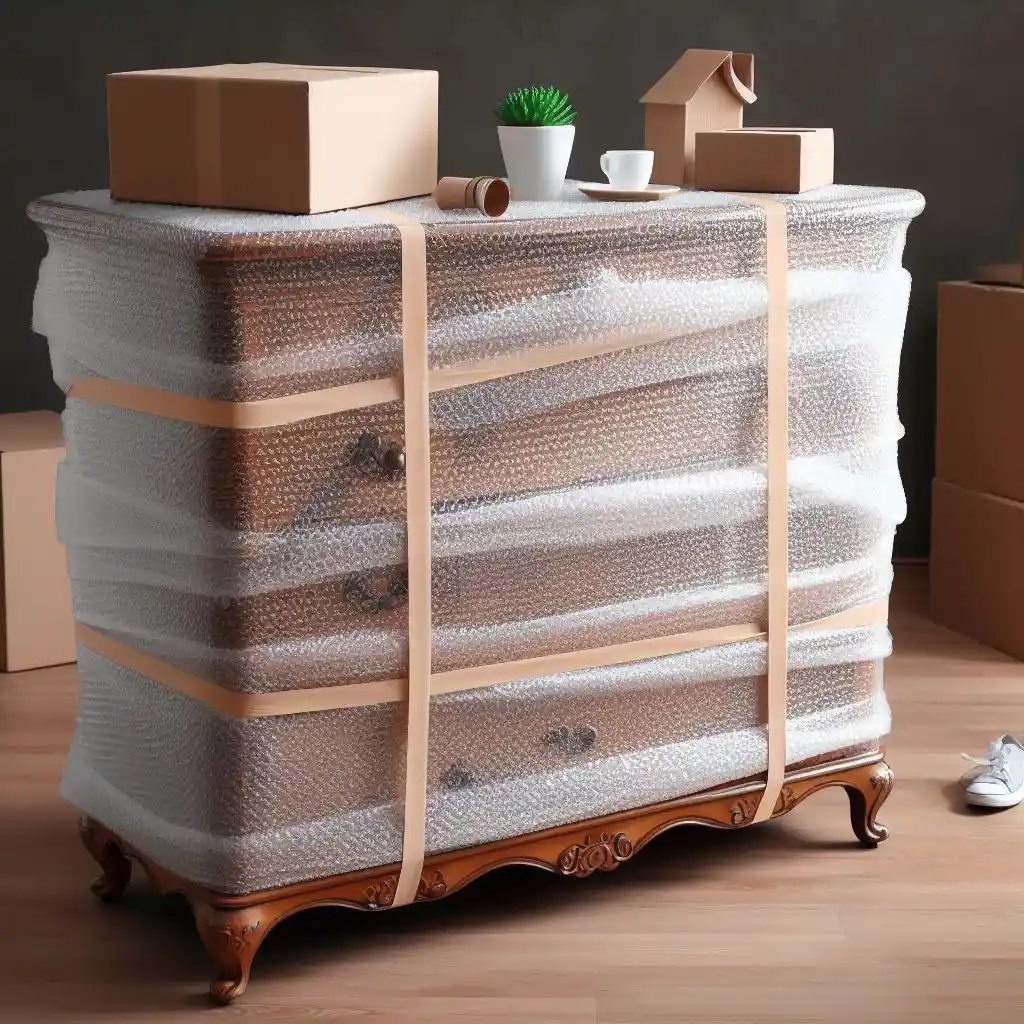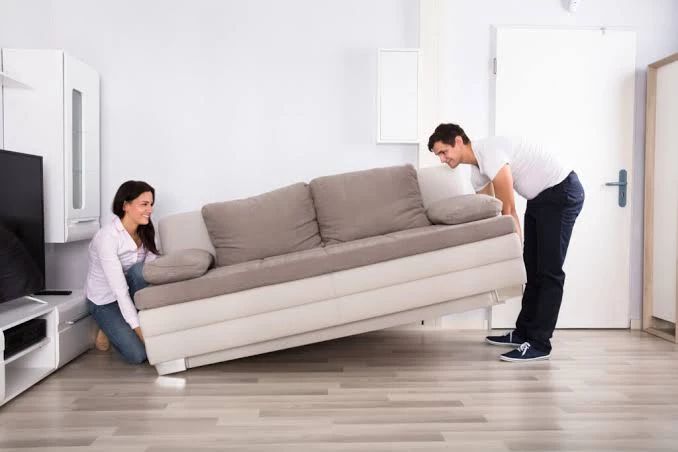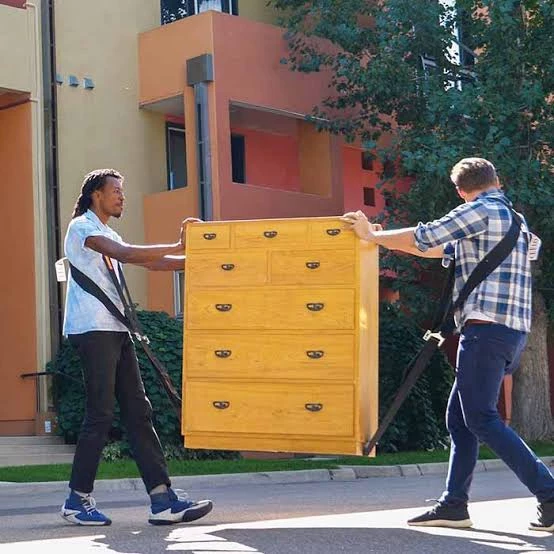Hey there, fellow furniture enthusiasts! It’s Anish Kashyap, and today we’re diving headfirst into the art of moving large furniture all by yourself. Yes, you heard me right—solo style. Can you do it? What challenges await? Well, let’s embark on this journey together and get your questions answered.
Can I Move Furniture By Myself?
Moving that grand sofa or colossal armoire can feel like a Herculean task, especially when you’re flying solo. But guess what? You can move hefty furniture items on your own. With a dash of determination, a sprinkle of knowledge, and a pinch of preparation, you’ll be amazed at what you can achieve.
What Are The Biggest Challenges When Moving Furniture Items Alone?
Moving large and bulky furniture items alone can indeed be a formidable task. As you gear up for this exciting journey of self-reliance, it’s essential to understand the specific challenges that may come your way.
- Weight and Size: Moving colossal furniture feels like a labyrinth dance. They’re heavy and bulky and make corners a challenge.
- Risk of Injury: Lifting without technique can lead to sore backs and circus-like mishaps. We’ll teach you the right moves.
- Space Constraints: Furniture likes hide-and-seek. Tight spaces turn into giant puzzles.
- Stairs and Elevations: Going up and down feels like a mini-mountain-climbing expedition.
- Protection of Belongings: VIP treatment for your furniture—protect from dings, scratches, and damage.
- Lack of Assistance: You, your furniture, and some friendly advice. Channel your inner superhero.
- Risk of Damaging Floors and Walls: Furniture doesn’t always mind its manners. Protect your floors and walls.
- Mental and Physical Stamina: It’s a workout for the body and mind. Patience, determination, and problem-solving are key.

Analyzing And Planning
Before you start heaving, hauling, and hoisting, a little analysis and planning can save you from furniture-moving fiascos. Ask yourself, “How can I ensure that large furniture pieces fit through doorways and tight spaces?” Well, measure, measure, measure! And if your furniture doesn’t fit? Stay tuned; we’ve got alternatives in our toolkit.
Equipping Yourself
What tools do I need to move large furniture successfully by myself?
You wouldn’t whip up a gourmet meal without the right ingredients, and moving furniture is no different. We’ll discuss the essential tools for a successful solo move. Dollies, ramps, moving straps, oh my!
How do I disassemble furniture without losing track of parts?
Disassembling furniture can be a bit like taking apart a LEGO masterpiece. We’ll guide you through the process and show you how to keep those pesky screws and widgets in check, so it’s as smooth as deconstructing LEGO without missing a block.
Here’s the step-by-step breakdown:
Gather your essential toolkit: It’s your toolbox of wonders for this deconstruction mission. Ensure you have screwdrivers, pliers, and a wrench on hand.
- Take photos before you begin: Your smartphone becomes your faithful companion. Take pictures of the furniture, especially the intricate details, like connectors or joints.
- Label and bag the parts: Use adhesive labels or small resealable bags to categorize and secure screws and components.
- Set up an assembly line: Lay out your labeled parts in order, just as you would sort LEGO bricks by color and size.
- Use a magnetic tray for small pieces: Use a magnetic tray to keep those elusive screws in check. This prevents them from rolling away during the process.
- Refer to the manufacturer’s instructions: If available, these are your assembly guidelines.
Following these steps ensures smooth furniture disassembly and keeps all parts organized for reassembly. It’s like solving a jigsaw puzzle where no piece goes missing.

Disassembly Decisions
Is it worth the effort to disassemble furniture?
The choice to disassemble furniture is a bit like deciding whether to go for the express lane or take the scenic route. Let’s go for a ride:
In some cases:
- Maximizing Space: Picture disassembling like folding a map for the tight corners and narrow doorways—it just works.
- Handling Obstacles: If you’re dealing with stairs or tricky terrain, disassembling is like putting on your hiking boots for a smoother trek.
- Furniture Armor: Think of disassembly as giving your furniture a protective shield against nicks and dings during the journey.
When It’s a Good Idea:
- Race Against the Clock: When you’re in a hurry, going full DIY might slow you down.
- Keep It Simple: Some furniture is straightforward, just like a recipe that doesn’t need any extra ingredients.
- Reassembly Worries: If you’re not up for the reassembly puzzle, keeping things intact is a reliable choice.
In the end, it’s all about your situation and how you like to handle the furniture-moving adventure. Whether you choose to disassemble or keep it whole, we’re here to make it as smooth as a Sunday drive.
How can I ensure I don’t lose screws or parts during disassembly?
Preventing screws and parts from disappearing during disassembly is like ensuring all your game pieces stay on the board. Use ziplock bags to store screws and small parts; tape screws directly to disassembled parts; and take photos or make notes as you disassemble. With these tricks up your sleeve, you won’t be left searching for missing pieces.

Furniture Protection
What can I do to prevent damage to my valuable furniture during the move?
Treating your furniture like royalty means protecting it every step of the way. Here are some tips and tricks to safeguard your prized possessions:
- Wrapping: Use plastic wrap or bubble wrap to cover delicate or upholstered pieces. It’s like giving them a cozy royal robe.
- Padding: Place furniture pads or old blankets around sharp corners and edges. This cushions them during the move, just like placing a soft barrier around precious jewels.
- Secure Drawers: If you’re moving a dresser or cabinet, secure the drawers with tape or straps to prevent them from sliding out during transit. Think of it as protecting your furniture’s secret compartments.
- Furniture Sliders: Invest in furniture sliders to move heavy pieces with ease while preventing damage to your floors. It’s like giving your furniture its magic carpet.
With these tricks, your furniture will arrive at its new home in regal condition.

Proper Lifting Techniques
What’s the correct way to lift heavy items without injuring myself?
Lifting heavy items without risking injury is all about the right technique. Here’s how you can do it safely, with no extra set of hands required:
- Bend Those Knees: Instead of hunching over, bend your knees to reach the item. It’s like doing squats at the gym.
- Get a Grip: Hold the item close to your body, keeping a firm grip. This is your weightlifting session—no swinging dumbbells.
- Use Your Legs: Push up with your legs as you stand. It’s similar to the leg press machine at the gym.
- Avoid Twisting: When turning, move your feet instead of twisting your torso. Think of it like pivoting on a dance floor.
With these techniques, you’ll be a pro at lifting heavy items without the risk of injury. You’ve got this!
How can I manage to move bulky items when I can’t find anyone to help?
When you’re the lone mover, make friends with furniture sliders, tilt, and slide, roll with 4-wheel moving dollies, and wear a back support belt for superhero-like protection. We’ll dive deeper into these tricks shortly.

Sliding, Rolling, and Dolly Dynamics
How can tools like sliders, moving straps, and dollies simplify the process?
When it’s just you and the furniture, these tools come to the rescue:
- Sliders: These nifty discs go under heavy items, reducing friction and making them glide with ease. Like a magic carpet ride for your furniture.
- Moving Straps: These straps help distribute the weight across your body, saving your back and legs. Think of them as the best workout buddy.
- Dollies: You’ve got 2-wheel hand trucks and 4-wheel movers. These provide a smooth platform for your items, turning the move into a rolling adventure.
- Back Support Belt: Like a superhero’s cape for your back, this belt supports your spine during heavy lifting.
- Furniture Lifter: This tool helps elevate heavy furniture, making it easier to slide things underneath. It’s like giving your furniture a lift.
- Furniture Moving Blankets: Wrapping your furniture in these blankets protects it from scratches and dings. It’s like giving your items a cozy hug.
- Furniture Jacks: These are like mini car jacks for furniture, allowing you to lift it off the ground slightly. It’s like giving your furniture a boost.
- Shoulder Dolly: This tool allows you to carry heavy items on your shoulders with a partner. It’s like having an extra set of hands.
These tools transform your solo move into a choreographed dance.
How do I securely position items on a dolly?
To securely position items on a dolly, follow these steps:
- Place the heavy item on the dolly’s platform.
- Ensuring it’s centered and balanced.
- Strap or secure the item to the dolly using straps or ropes, making sure it won’t shift during transit.
- Confirm that the item is stable and won’t tip over.
Now, you’re ready to roll smoothly to your destination.
Prioritizing Safety and Well-Being
What are the safety measures to look for while moving large furniture?
When moving large furniture, prioritize safety with these measures:
- Proper Lifting: Always use the correct lifting techniques to avoid straining your back or causing injuries.
- Protective Gear: Wear work gloves to protect your hands and a back support belt to safeguard your spine.
- Clear Pathways: Remove obstacles and ensure clear pathways to prevent tripping.
- Furniture Protection: Wrap your furniture with padding to prevent damage during the move.
- Secure Loading: When using tools like dollies, ensure items are securely fastened.
- Breaks: Take regular breaks to avoid exhaustion and stay hydrated.
Follow these measures to ensure your move is incident-free.
Final Placement and Troubleshooting
How can I be certain that my furniture fits perfectly in its new location?
Getting your furniture to its new home is one thing, but making sure it fits seamlessly is another challenge. We’ll guide you through the process, just like tailoring a custom suit.
- Measuring Space: First, measure the available space in your new location. This includes doorways, hallways, and the actual room where the furniture will reside. It’s essential to ensure that your furniture can physically fit through these spaces.
- Furniture Measurements: Measure your furniture pieces as well. Note their height, width, and depth. This information will help you determine if each item will fit comfortably in its designated spot.
- Planning Arrangement: Once you have the measurements, plan how each piece will be arranged. Consider the aesthetics and functionality of the room. Think about traffic flow and how the furniture complements the space.
- Visualize: Use tools like graph paper or online room planning apps to visualize the layout. This will give you a clear picture of how everything will fit together.
By following these steps, you’ll ensure that your furniture fits perfectly in its new home, creating a harmonious and functional living space. We’ll discuss each of these aspects in more detail shortly.
What if I miscalculate the space in my new location?
Mistakes happen, and if you miscalculate the space in your new location, we’ve got some nifty troubleshooting tips to save the day.
- Disassemble and Reassemble: If a piece doesn’t fit, consider disassembling it and reassembling it inside the room. This can make it easier to maneuver through tight spaces.
- Doorway Removal: In extreme cases, you might need to remove a door from its hinges temporarily to create more space.
- Corner Angles: Utilize corner angles effectively to fit larger pieces diagonally.
- Reevaluate Arrangement: If multiple pieces don’t fit as planned, reevaluate the furniture arrangement in the room to find a new layout that works.
- Professional Assistance: If all else fails, don’t hesitate to seek professional assistance, such as furniture movers or carpenters, to modify furniture or doorways.
With these troubleshooting tips, you can conquer any space miscalculation and get your furniture in place without breaking a sweat.
Conclusion
You’ve just aced the art of moving large furniture solo. With determination, knowledge, and preparation, you’ve conquered formidable challenges, from weighty pieces to potential injuries, tight spaces, and even protection of your precious belongings. The toolkit is your ally, and you’ve mastered disassembly without losing a single piece. From disassembling to optimizing space, we’ve covered it all, so your move is smooth and stress-free.
So, there’s your answer: Yes, you can move that grand sofa solo. You’re ready, well-prepared, and have a suite of tricks up your sleeve, turning this Herculean task into a smooth and satisfying experience.
RELATED: How To Make Small Bedroom With Furniture: Small To Spacious

